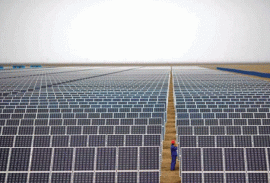
When conflict zones are hit by natural calamities, problems tend to increase manifold.
In postmodern Pakistan, the comparison of grief has grown into an ideology. The pervasive effect is such that it has crafted a repertoire of terms for anyone who questions it. Insensitive, is the most ‘respectful’ of the labels in a sizeable jargon that is meant to keep the sceptic “pinned and wriggling on the wall” for eternity. It is under the circumstances, understandably, that our experts could find no better comparison than to equate the effects of climate change with terror, and even more. However, there seems to be little or no effect of the comparison. Not even on the high priests of comparative grief.
What’s more perilous?
But is climate change a bigger threat? The answer lies in how seriously the question is taken and the understanding that lies beyond simplifying problem we are faced with. Statistics reveal that in July and August, an estimated 44 people lost their lives in terrorism-related incidents in Khyber-Pakhtunkhwa. During the same period, the deaths caused by incidents related to climate change in 17 districts of the province stood at an alarming 102, while another 108 people were injured.
These include heavy rainfalls, winds exceeding 120 km/hour and glacial lake outburst floods. However, the extent of damages cannot be gauged through human losses alone as financial damages worth Rs1.4 billion have been estimated.
At any given instance after 2007, Pakistan has witnessed at least 0.4 million people displaced from their home by natural calamity. Since 2009, a large number of people have been displaced from tribal areas due to military operations. The number of houses partially damaged and fully destroyed in July and August alone amount to 3,977. These include 1,201 houses of the poorest neighbourhoods of Lakki Marwat. The quoted figures are from the official damage assessment of the Provincial Disaster Management Authority. Fata is completely out of the radar. The meteorological department does not even have a rain gauge there.
Down to the economy
The consequences of the problem are greatly undermined in the comparison between terrorism and climate change. What lies at the heart of the issue is something graver. In an area marred by conflict, climate change is disrupting regular patterns of wealth distribution and increasing economic insecurities. In the umpteen surveys carried out by the government in conflict zones, the direct relation of terrorism to the lack of stable economic condition is more than evident. In the Post Crisis Need Assessment, a study for economic prosperity in Fata supported by the Asian Development Bank, European Commission, United Nations and World Bank clearly states that the average salary of a khasadar official was Rs14,000 in comparison to a militant who was paid Rs25,000 from the banned outfits.
On a local level, the understanding of climate change is only limited to a tree plantation drive by the government. Like every other disaster management method, whether natural or not, there are more workshops and pressers than actual work on ground. The absence of a policy that formalises into strategy is a fact that is not even in the realm of acknowledgement as yet. Climate change is not just a greater threat than terrorism but a phenomenon which will determine the security paradigm of the future.
Published in The Express Tribune, October 7th, 2015.

1736599343-0/fizza-(8)1736599343-0-165x106.webp)
1736598692-0/fizza-(7)1736598692-0-165x106.webp)
1736598106-0/Untitled-design-(10)1736598106-0-165x106.webp)
1736598040-0/fizza-(6)1736598040-0-165x106.webp)

1736508423-0/Express-Tribune---News-Desk-(9)1736508423-0-270x192.webp)










COMMENTS (1)
Comments are moderated and generally will be posted if they are on-topic and not abusive.
For more information, please see our Comments FAQ